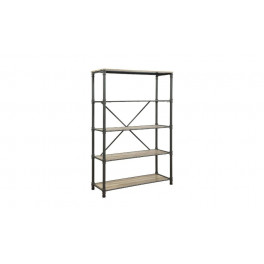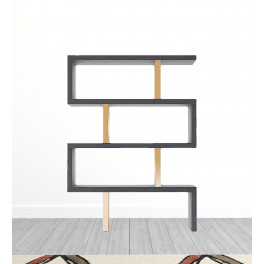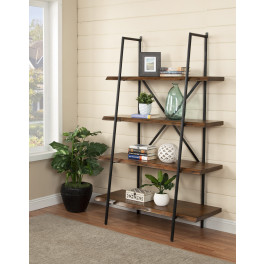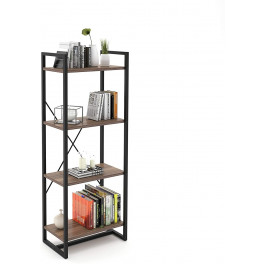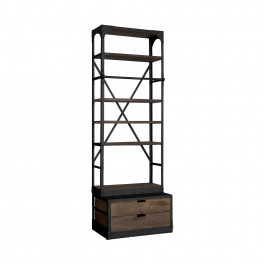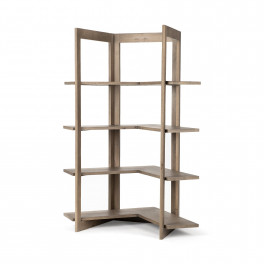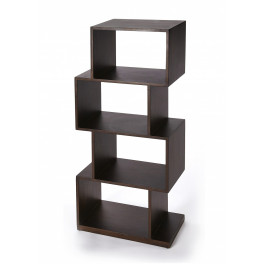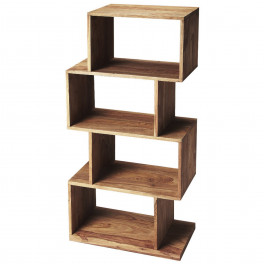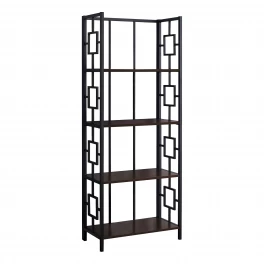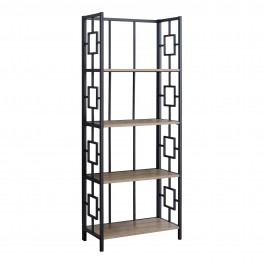Decorating a home is a process that is never really finished. Tastes change, trends come and go—we get tired of some things and interested in others. Most of us don’t redecorate on a regular basis, but who doesn’t get the itch for change every once in a while? Out with the old, and in with the new, right?
Before giving outdated décor or furniture the old heave-ho, why not try a simple but stunning makeover? In less time than it takes to shop for something new, you can learn how to decoupage on wood and most other rigid materials. Transform your has-beens from blah to beautiful with a modern take on this traditional craft in 5 easy steps.
What Is Decoupage?
Decoupage is the art of gluing decorative paper to hard surfaces. During the Victorian era many a footstool and jewelry box were decoupaged with fancy paper, using multiple layers of slow drying varnish as a sealant. Today’s process is much easier, thanks to modern crafting’s most wonderful invention: Mod Podge, a water based adhesive and sealant. Example here:
Most decoupage is done on wood—furniture, frames, ornaments, trinket boxes, you name it. The process can easily be transferred to other rigid surfaces as well. You can decoupage on glass, metal, most plastics, and even cardboard. Use whatever paper strikes your fancy—scrapbook paper, photographs, magazine cut outs, or your own drawings. My favorite decoupage projects usually involve old calendars, used wrapping paper, or some other disposable paper that is just too wonderful to get rid of. It’s an extra bonus if I’m able to upcycle scrap wood or an old, neglected item for a base.
Decoupage Materials
For this project, I used fairly basic supplies:
- Scrapbook paper and pictures
- Scissors
- Pencil
- Ruler
- Scrap wood (color sample blocks from a furniture store)
- Sandpaper/ sanding block (medium and fine grit)
- Mod Podge (classic Matte formula)
- Paint brushes
- Acrylic craft paint and finish (optional)
Make sure you have a basic end vision of what you want to achieve before starting. Your pictures and/or patterned papers need to be a good fit for your base—a two inch picture isn’t going to cut it on a twelve inch footstool without some background and trimming. Decide whether you want a painted background and if so, choose colors that complement your paper selections. You can buy scrapbook paper, Mod Podge, and all your decoupage supplies at Michael’s, A. C. Moore, or another craft store.
If you’ve never used Mod Podge before, selecting your formula may seem overwhelming, as there are over a dozen different kinds. For most projects, classic Matte (flat finish) or Gloss (shiny finish) will be fine. For decoupage on furniture, use either Furniture or Hard Coat formula, and there is a special Outdoor formula for, yup, outdoor items. No matter the formula you choose, the process can get a little sticky, so work on a protected surface. I used one my favorite upcycled yoga mat ideas for a non slip work space.
Step 1: Sand the Base
The success of decoupage depends on the smoothness of your base surface. Bumps, scratches, and roughness will show through the paper you apply and make it appear uneven, so it needs to be sanded.
Quick Tip: If you’re unsure how to pick the right sandpaper, start with medium (80 grit) sand paper to smooth the surface of bare wood, then finish it off with fine (100-120 grit.) If your wood has been finished previously, you can go right to the fine grit. Be sure to sand all surfaces, sides included.
If your base is extremely rough, you may need to use a power palm sander. If you do use a power sander, or even if you are hand sanding a base piece that is likely to give rise to a lot of dust, it’s best to wear a dust mask.
When you have finished sanding, wipe your base with a damp cloth to remove all residue. Don’t use a paper towel—that may pill and leave residue of its own. Remember—smooth is the key.
Step 2: Paint the Base
Painting the base can provide a frame or colorful background for your images and patterns. If you plan to completely cover every surface of your base with paper, or prefer to leave unpainted edges for a rustic look, you can skip this step and move on to step 3.
Acrylic craft paint is fine to use on wood, although it may not adhere to some plastics. Decoupage is also one of many great projects for leftover paint – you know, those cans sitting in your basement since you redid the living room. I would recommend using exterior paint if your project will be finished with Outdoor Mod Podge and kept outside, but for most indoor pieces, anything goes.
Apply two to four coats of paint to your base, allowing complete drying between coats. If you are starting with unfinished wood, you may want to apply a primer first. Your end result should be a base with uniform color and no streaks. You can use the drying time to work on the next step of the project.
Step 3: Prepare Papers
Whatever decorative papers you use will have to be cut to fit your project. Measure the area you want to cover, then measure and mark your paper accordingly to prepare it for cutting. Remember, measure twice before you cut. In this project, I worked with pictures from an old desk calendar, so I cut them out in their entirety, then measured and trimmed to fit.
If you are using more than one layer of paper, measure and cut all layers for your project before moving on to the next step. Place your cut papers on your base to get a preview of what your finished product will look like.
Check for any areas that need to be trimmed, and make sure you’re happy with the overall effect. It’s best to make changes now, as it can get tricky after you affix your paper to the wooden base. I realized that I wanted a greater contrast between the two shades of green in my turtle picture and the background paper, so I added a simple black frame to the picture with a felt tipped pen.
Step 4: Glue Papers
Apply a moderate layer of Mod Podge to your base with a brush. It should be thick enough that it appears whitish, but thin enough that there is some transparency. Next, carefully lay your first layer of paper in place. If you are decoupaging multiple surfaces of your base piece—for example, the top and the sides, apply Mod Podge and then paper to only one surface at a time.
Once your paper is in place, smooth it out gently with your fingers, starting at the center. The goal is to make the paper completely flat with no air bubbles under it.
Quick Tip: Use a roller to smooth out your paper. I used the cylindrical handle of a dry paintbrush, but a dowel or pen will work just as well (no hex pens or click pens—it has to be completely cylindrical.) For large pieces and furniture, you can use a rolling pin. Roll from the center toward the edges, using your a flat hand to apply uniform pressure. Once air bubbles are eliminated, roll firmly and quickly over the whole paper.
Allow your first layer of paper to dry in place for fifteen minutes—this is very important! Applying more Mod Podge, or any glue or sealant, while underlying layers are still wet will cause the paper to rise and bubble. Once your first layer is dry, repeat the paper application and smoothing process for each additional layer.
Step 5: Seal and Finish
After all paper layers are placed and dried, apply a moderate layer of Mod Podge to all surfaces as a sealant. Don’t worry about the whitishness; it will dry clear—give it a full fifteen to twenty minutes. Repeat this process for at least three coats on most projects, and at least five coats on furniture. The more layers you apply, the more the appearance of the paper edges will recede, making the image or pattern appear to be painted on.
If you apply five coats or more, wet sand with super fine sandpaper (400-600 grit) after the fifth coat to maintain a smooth finish, then wipe with a damp cloth. The makers of Mod Podge also recommend applying a coat of clear acrylic finish over your last coat of Mod Podge to eliminate tackiness. Personally, I never had a problem with tackiness at the end of application, and consider Mod Podge both a decoupage glue and sealant. However, since I usually have acrylic finish on hand, I use it for the end coat as recommended. Don’t overbrush when using acrylic finish, as it will become cloudy.
Once your finish has dried, your project is ready for display. Find a place to show it off and enjoy it for years to come—simply dust with a dry microfiber cloth or wipe with a damp one to keep your creation looking good. Congratulations on your decoupage success! You see, all that waiting for the Mod Podge to dry really does pay off!
How to Decoupage on Wood




